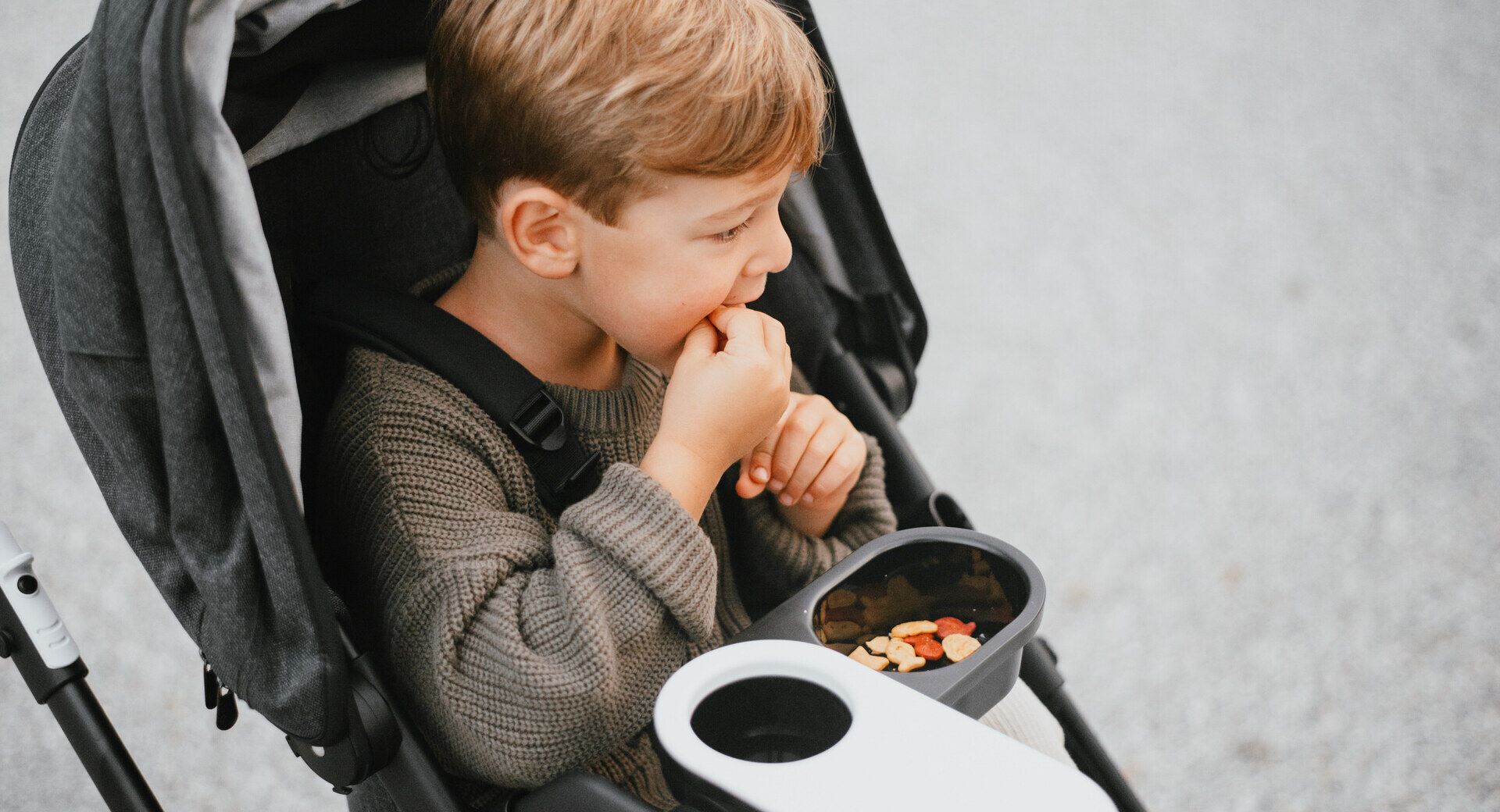
Do’s and don’ts for snacking on the go
There’s no denying kids love a snack. But when you’re out and about in the car or stroller, there are a few important things parents and caretakers need to keep in mind.
Make sure kids sit up straight to eat
It has nothing to do with good manners or creating less mess. When a kid’s body (or anyone’s, really) is lying at an angle, food has more potential to go down the wrong way into the trachea, blocking the airway to the lungs, notes Dr. Mona Amin, a general pediatrician. “Whereas if one is sitting upright, the food will flow down more smoothly, straight into the esophagus, and then the stomach—gravity helps to make that work.” Since children under the age of four are at the greatest risk for choking, proper posture is important. “The safest position for a child to eat is with their hips and knees bent at 90 degrees to reduce the risk of choking,” says Amy Palanjian, founder of Yummy Toddler Food.
“The safest position for a child to eat is with their hips and knees bent at 90 degrees."
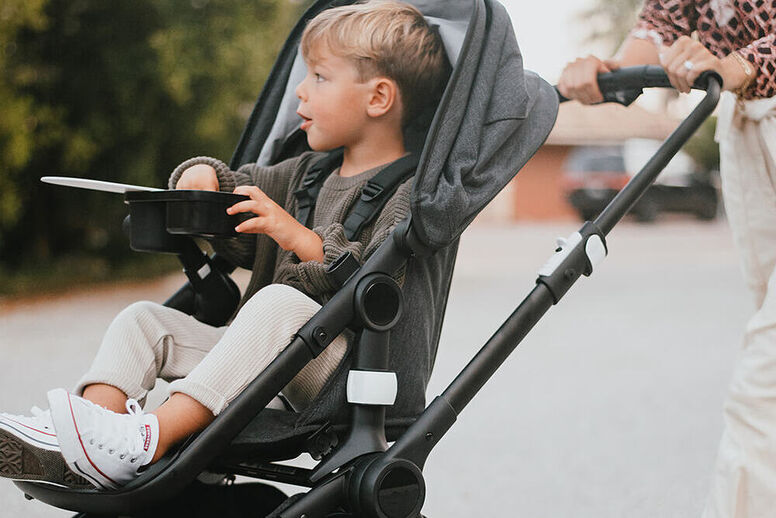
Avoid snacks in the car seat
There are several reasons you want to steer clear of this. For one thing, your child may be in a reclined position, and that automatically puts them at more risk of choking. And if the car seat is rear-facing, it will be even harder for you to spot from the front seat if your kid is in trouble, especially since the act of choking can be silent. Think of it in another way: “In the event that your child is choking, will you be able to pull over, get them out of the car seat, and then perform the Heimlich maneuver or dislodge that object fast enough?” says Dr. Mona, who plans snack times strategically before or after car trips so as not to allow her young son to eat in the car. “Sometimes it means he's not happy because he doesn’t like waiting, but ultimately he’s learning patience,” she says. If you have an infant who is crying hysterically for milk, do your best to wait it out until you get home to feed them if you can, or find a safe place to pull over if you must.
"Do your best to wait it out until you get home to feed them if you can, or find a safe place to pull over if you must."

In the stroller, move the seat upright
Eating in a stroller poses far less of a choking hazard than the car seat, so long as you make sure the child isn’t reclined at all, is completely strapped in, and can reach their tray table (the Bugaboo snack tray features a convenient sliding cover). You also want to make sure you can observe them as they are eating in case they start gagging, says Dr. Mona. So, pull back the canopy to keep an eye on them and stay present; don’t use this time to go on your phone. Of course, there’s still the chance you could unknowingly hit a bump in the road just as your kid pops a Cheerio in their mouth. But unlike in a moving car, you’ll be going at a much slower speed, and you’ll be able to act fast. And there’s no harm in waiting until you get to that nice picnic table to have snack time either.
“Make sure the child isn’t reclined at all, is completely strapped in, and can reach their tray table.”
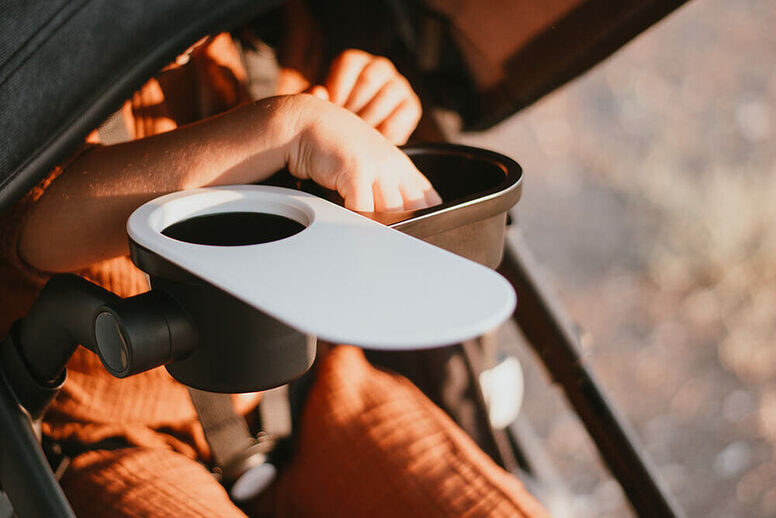
Pack the right on-the-go snacks
There are a lot of boxes to check: food that is somewhat healthy and easy to grab and throw in a diaper bag, yet won’t create a total mess and is not a choking hazard—and here’s the kicker, it has to be something your child will actually want to eat. Considering infants and toddlers generally need to eat every 2 to 3 hours, that calls for plenty of options. No matter where you go or how you do it, it’s a good idea to focus on low-risk choking foods, which luckily are things little kids tend to gravitate toward anyway. “We like to do smoothies or applesauce in a reusable pouch. It’s pureed so kids can’t choke,” says Palanjian. Another idea are snacks that will dissolve quickly so they’re less likely to get caught in the throat, like yogurt melts, puffs, a cereal like Cheerios or Chex, or a soft whole-grain fruit bar broken into smaller pieces. When it comes to fresh fruit or vegetables (a nice hydrating choice during warmer weather), just be selective about which ones you serve and how. Look for soft textures and cut them into smaller pieces, like bananas, watermelon, or strawberries. Cucumbers and bell peppers are good too. “Cut them into little sticks the size of matchsticks. That's a fun shape and a lower choking risk for 14 to 16 months and up,” says Palanjian. As for children around six months to one year old who may not have many teeth, go for foods that are the width of your pinky and that you can squish between your fingers, advises Dr. Mona. “If it's mashable between your fingers, that means that it's mashable between their gums.” A fresh food feeder is another option for infants. It’s essentially a mesh cover for pieces of fruit that ensures that only tiny bits get through.
“Look for soft textures and cut them into smaller pieces, like bananas, watermelon, or strawberries.”
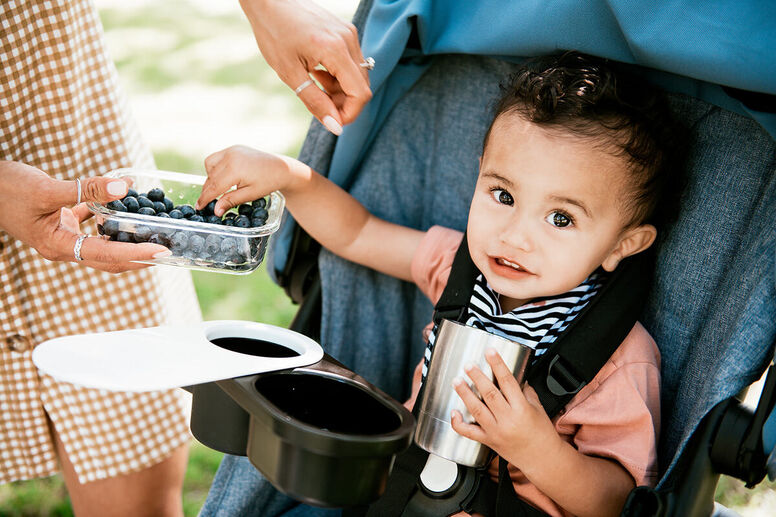
And bypass these foods
Anything that’s round, hard, sticky, or super chewy is problematic. That includes snacks like grapes, big chunks of raw carrot or apple, chewy gummies, or tortilla chips. A child’s airway under the age of five is roughly the diameter of a nickel, notes Holly Choi, a certified first-aid instructor and child passenger safety technician. “So, if you think of a grape, a hot dog, a cherry tomato, or even a large blueberry, that's exactly the size of their airway.” You can, however, slice those foods vertically (not like coins), in halves or quarters, to make them safer to eat. Crackers are another thing to watch out for, and not just because of all the crumbs they create. “It’s very easy for a child, even one as old as four, to cough and they will go down the wrong airway,” says Dr. Mona. (Though softer crackers that dissolve relatively quickly are a safer choice.) Speaking of mess, you may also want to stay away from snack bars that have a chocolate or yogurt drizzle that could melt all over their hands. But, seriously, when it comes kids, no food is a 100 percent no mess, right?
"A child’s airway under the age of five is roughly the diameter of a nickel."
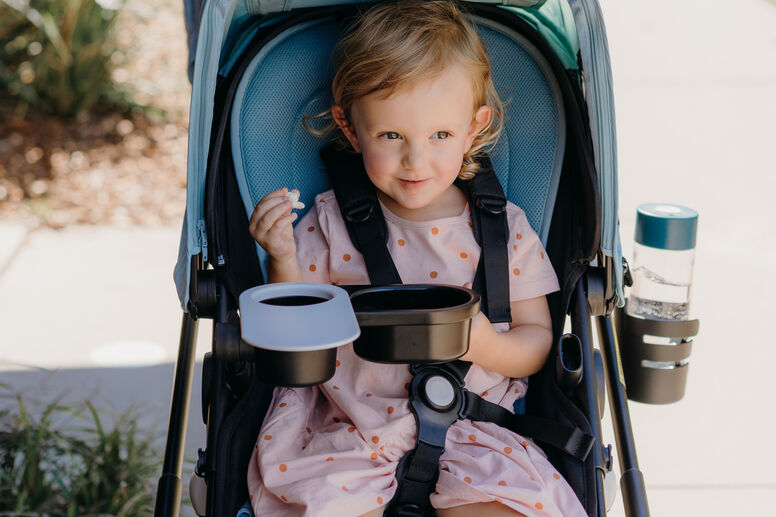
Don’t forget to bring plenty of water. Not only is it important to keep kids hydrated, but drinking makes foods easier to eat and reduces the risk of choking. Along with all these helpful snacking tips, you’ll always be good to go.